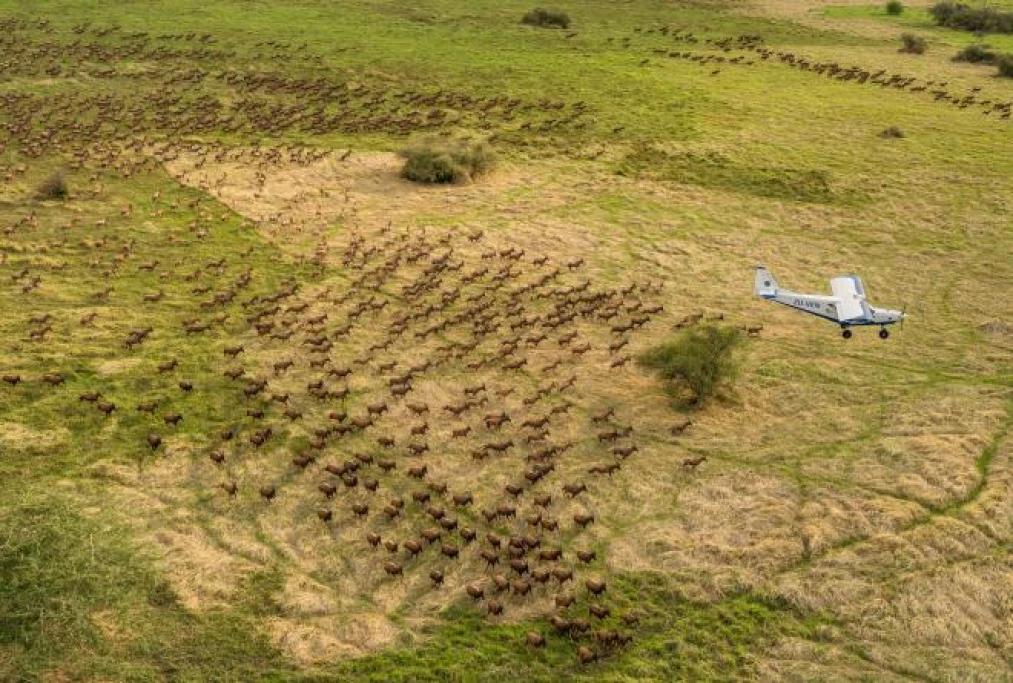
President Salva Kiir announced on Tuesday that South
Sudan is home to the world's largest land mammal migration, as evidenced by its
census survey.
Despite its history of struggle, South Sudan's ecosystems
remain largely intact, serving as sanctuaries for a diverse range of wildlife.
The sprawling savannas and lush forest are home to the
last few populations of species found in the country, such as the African
elephant, Nubian giraffe, and cheetah.
While these populations have declined since the 1980s,
other migratory species have found a way to thrive.
In 2023, African Parks and partners carried out a survey
that was the first systematic aerial assessment of wildlife, livestock, and
human activity in the landscape since 2010.
It confirmed that South Sudan hosts the largest land
mammal migration in the world, where an antelope migration consists of
approximately six million animals, including the white-eared Kob, tiang,
Mongalla gazelle, and Bohor reedbuck.
Speaking in Juba at the launch of a census survey of
wildlife's migration in Badingilo, Boma, and Jonglei landscapes, President Kiir
expressed the government's commitment to developing tourism into a sustainable
sector.
"I announce the findings of this census to our
nation and the international community that the total wildlife population in
South Sudan is estimated at 5.8 million. You must keep increasing them, not
decreasing the animals," President Kiir emphasized.
"To achieve this, I call upon the security forces,
particularly the Ministry of Wildlife and its partners, to prioritize training
and equipping wildlife rangers to combat poaching and wildlife trafficking
within protected areas."
Kiir stated that an individual found engaging in poaching
or wildlife trafficking in South Sudan would face the full force of the law.
The head of state additionally urged the private sector
to embrace the opportunity and invest in wildlife tourism ventures, citing that
protecting heritage is a shared responsibility.
For his part, Dr. James Wani Igga, the Vice President for
Economic Cluster, outlined some of the challenges facing wildlife in the
country.
"Number one is poaching. Loss of wildlife species to
the bush and meat. We have already seen how they are slaughtered. Disease from
wild animals or from domestic animals accidentally trapped," Wani Igga
stated. "The data on large carnivore numbers are few and often do not
cover all of the protected areas."
Wani stated that poaching contributes to the disruption
of wildlife migration, citing the need to create awareness.
"It has been difficult to raise awareness, and this
is our number one problem. Awareness within our people so that we stop killing,
so that we know that it is illegal," he continued.
He emphasized the importance of formulating policies that
would facilitate the growth of wildlife through the use of land, stating:
"The other solution is to develop and implement
harmonious, comprehensive legal and institutional frameworks that provide for
the expansion of wildlife-integrated land use.”
The vice president also encourages the deployment of the
police, wildlife officers, and judiciary to take on wildlife crime in a more
robust way.
Beyond its ecological richness, the country's history is
deeply intertwined with its landscapes, with ancient cultures and traditions
woven into the fabric of its terrain.
The Great Nile Migration Landscape remains one of the
largest intact savanna floodplain ecosystems on Earth, covering an area of
approximately 130,000 km2 in South Sudan and a total of approximately 150,000
km2, including Gambella National Park and the associated border areas in
Ethiopia.
The Sudd Swamps are Africa's largest wetlands and the
world's second-largest.